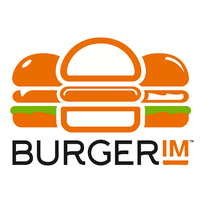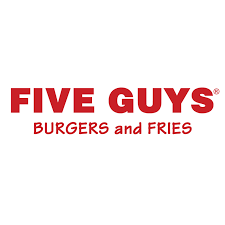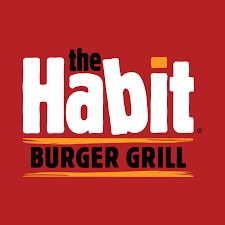Burgerim Franchise in 2025: Costs, Fee & FDD
Learn from the rise and fall of Burgerim. Understand the costs, fees, and potential pitfalls that led to the franchise’s downfall, along with key insights to help you navigate the fast-casual burger industry wisely. Understand the lessons from this failed venture before making your next investment decision. Check out our findings below!
Table of Contents:
Burgerim was a fast-casual burger franchise founded in 2014 by Oren Loni in Israel, quickly making its way to the U.S. market. The franchise became known for its unique concept of offering customizable mini-burgers, allowing customers to mix and match different flavors and proteins in one meal. This innovative approach helped Burgerim gain a foothold in the highly competitive burger industry, appealing primarily to younger, urban customers looking for variety and customization.
The franchise’s core offerings included a wide range of mini-burgers, with options like beef, lamb, chicken, and vegetarian patties. Ancillary products included fries, salads, and beverages, catering to a broad customer base that valued both quality and choice. Burgerim targeted a diverse audience, from office workers to families, with its affordable, gourmet-style menu items designed for quick-service environments.
At its peak, Burgerim expanded rapidly, boasting over 200 locations across the United States and several international outposts. However, this rapid growth came at a cost, as operational challenges and inconsistencies began to emerge. The franchise faced significant financial and legal troubles, leading to lawsuits and mounting scrutiny from franchisees and regulatory bodies. Eventually, these issues culminated in the Federal Trade Commission (FTC) intervening and shutting down the franchise, effectively ending its operations.
Before its closure, Burgerim offered a franchise support system that included training programs, marketing assistance, and operational guidance. However, the franchise’s downfall highlighted the importance of transparency and sustainable growth strategies. Despite its initial promise, the franchise’s legal and financial issues ultimately led to its shutdown, serving as a cautionary tale for potential investors in the fast-casual restaurant industry.
Burgerim Franchise Insights
- Rapid Expansion: Founded in 2014, Burgerim expanded to 109 franchise locations across the U.S., reflecting its aggressive growth strategy, which ultimately proved unsustainable.
- Investment Requirements: The minimum cash required to open a Burgerim franchise was $380,130, with a franchise fee of $55,000 and a royalty fee of 5%, but these costs contributed to financial strain for many franchisees.
- Franchise Exclusivity: Burgerim operated entirely through franchised units, with no corporate-owned stores, relying heavily on franchisees for growth, which became a major vulnerability as operational issues surfaced.
How much does it cost to open a Burgerim franchise?
Understanding the potential investment size and capital requirements was crucial when considering opening a Burgerim franchise. These financial commitments, including initial franchise fees, equipment costs, and ongoing operational expenses, significantly impacted the feasibility and profitability of the venture. Thoroughly evaluating these factors was essential to ensure that potential franchisees were prepared for the financial responsibilities and could make informed decisions about their ability to sustain and grow the business. However, for many, these financial challenges contributed to the franchise’s eventual downfall, underscoring the importance of careful due diligence in such investments.
Min & Max Investment
Opening a Burgerim franchise involved several key costs, which are outlined in Item 7 of the Franchise Disclosure Document (FDD). You can see a breakdown of the costs to open a Burgerim below from the most recent Item 7 below:
| Type of Expenditure | Minimum Investment | Maximum Investment |
|---|---|---|
| Initial Franchise Fee | $40,000 | $70,000 |
| Leasehold Improvements | $60,000 | $225,000 |
| Lease Payments (3 Months) | $4,800 | $60,000 |
| Security Deposits | $6,000 | $45,000 |
| Furniture, Fixtures, and Equipment | $50,000 | $150,000 |
| Signage | $3,500 | $23,000 |
| Initial Inventory | $3,000 | $10,000 |
| Blueprints and Plans | $7,000 | $20,000 |
| Point of Sale System | $6,000 | $10,000 |
| Travel, Lodging, and Meals for Initial Training | $2,500 | $5,000 |
| Insurance (3 Months) | $600 | $2,000 |
| Grand Opening Advertising | $2,500 | $10,000 |
| Licenses and Permits | $2,000 | $15,000 |
| Beer & Wine License | $300 | $15,000 |
| Professional Fees | $1,500 | $8,000 |
| Additional Funds (3 Months) | $5,000 | $15,000 |
| Total Estimated Initial Investment | $194,700 | $683,000 |
Item 7 in the Franchise Disclosure Document (FDD) is the “Estimated Initial Investment” section. It outlines the total costs a franchisee can expect to incur when starting a franchise, including the initial franchise fee, equipment, inventory, real estate, and other startup expenses. This section is crucial because it provides potential franchisees with a detailed understanding of the financial commitment required, helping them assess affordability and plan their investment strategy effectively.
Required Capital
To open a Burgerim franchise, the required capital involved both the initial investment costs and a net worth requirement set by Burgerim. Let’s take a closer look below:
- Initial Investment The total estimated initial investment ranged from $194,700 to $683,000. This included all startup costs such as the franchise fee, real estate, construction, equipment, initial inventory, and additional funds for operating expenses. Franchisees who financed their investment were advised to have 20% of the total amount in equity (cash), ensuring a solid financial foundation.
- Liquid Assets:Although specific liquid asset requirements weren’t explicitly stated for Burgerim, franchises in the quick-service restaurant industry typically required liquid assets in the range of $150,000 to $300,000. This liquidity was crucial for covering initial costs and handling unforeseen expenses.
- Net Worth Similar franchises in the industry often required a minimum net worth ranging from $500,000 to $1 million. This reflected the need for financial stability and the ability to secure financing if necessary. However, these requirements also highlighted the financial demands that ultimately contributed to the franchise’s challenges.
How much does a Burgerim franchise owner make?
Calculating the salary of a Burgerim franchise owner involved analyzing gross sales to determine total revenue, assessing operational efficiency to understand profit margins, and accounting for franchisor fees and additional expenses such as rent, utilities, and payroll. Effective management of these factors was crucial in impacting the profitability and financial success of a Burgerim franchise owner. This comprehensive financial analysis helped estimate net profits, from which the owner’s salary could be derived. A clear understanding of these factors was essential for accurate salary projections and financial planning, although many franchisees struggled to achieve sustainable business operations, contributing to the franchise’s eventual downfall.
Burgerim Revenue & Gross Sales
Unfortunately, the median gross sales for Burgerim franchises were never made available in the public domain. Given the significant challenges and rapid, unsustainable expansion that led to Burgerim’s failure, it was crucial for prospective franchisees to perform thorough due diligence. For those who were considering investing, this approach was essential in providing a more accurate assessment of the likely outcomes, which, in many cases, were far from promising due to the franchise’s eventual collapse.
Which key factors impact the average revenue performance of Burgerim franchisees?
The performance of U.S. franchisee median gross sales for Burgerim likely reflected a combination of problematic factors. One significant issue was the franchise’s rapid and unsustainable expansion, which stretched resources thin and negatively impacted quality and consistency across locations. Additionally, the absence of Item 19 in the Franchise Disclosure Document (FDD) meant that many franchisees entered the system without a clear understanding of financial performance, leading to unrealistic expectations and disappointing outcomes. Economic factors, such as fluctuations in consumer spending and increased competition, along with operational challenges and market oversaturation, further contributed to inconsistent and ultimately unsustainable sales performance year-over-year, playing a role in the franchise’s eventual failure.
Burgerim Franchise Operational Costs
When opening a Burgerim franchise, key primary ongoing operational costs included several significant expenses:
- Labor Costs Employee wages, benefits, and payroll taxes were substantial, particularly given the quick-service nature of the business, which required a steady workforce for food preparation, customer service, and management.
- Food and Beverage Costs As a restaurant, the ongoing expenses for ingredients, beverages, and supplies were critical. Maintaining quality while managing waste and spoilage was essential for controlling these costs.
- Utilities and Maintenance Regular expenses like electricity, gas, water, and routine maintenance of kitchen equipment and the dining area were necessary to keep the restaurant operational.
- Lease or Rent For those who did not own the property, lease or rent payments were a significant ongoing cost, with the franchise location greatly influencing this expense.
- Technology and POS Systems The ongoing maintenance and updates for point-of-sale systems, along with technology subscriptions, were vital for efficient operations.
- Inventory Management Managing inventory levels, including storage and rotation, was crucial to avoid stockouts or excess inventory that could lead to wastage.
These operational costs were critical considerations when planning the budget and assessing the potential profitability of a Burgerim franchise, although many found these expenses difficult to manage, contributing to the franchise’s broader challenges.
Burgerim Franchise Fees
When Burgerim was still in operation, franchisees were required to pay several ongoing fees as part of their agreement. Here’s a breakdown of the most relevant fees:
- Royalty Fee Burgerim charged a 5% royalty fee on gross sales, though franchisees were not required to pay this fee for the first three months of operation.
- Brand Development Fee Franchisees paid a flat fee of $2,000 per month for brand development.
- Cooperative Advertising This fee was determined by the members of the franchise, but it was capped at no more than 1% of gross sales.
- Additional Fees There were also potential additional fees for various services, such as technology, training, and other support provided by Burgerim.
These fees were essential considerations for franchisees, as they impacted the overall profitability and operational costs of running a Burgerim franchise before the franchise system was shut down by the FTC.
Burgerim Franchise Earnings
Unfortunately, specific estimates of franchise earnings for Burgerim based on median gross sales were not available due to the lack of financial performance data in their Franchise Disclosure Document (FDD).
Generally, in the quick-service restaurant industry, owner-operators had the potential to earn a higher income by directly managing day-to-day operations, which could reduce labor costs. However, without concrete financial data, any estimate of earnings would have been speculative, making it crucial for prospective franchisees to conduct thorough due diligence. This included speaking with existing franchisees to gain a clearer understanding of potential profitability, though many discovered that the financial challenges were greater than anticipated.
How to Open a Burgerim Franchise
Becoming a Burgerim franchisee was a rigorous process that involved financial scrutiny, extensive training, and thorough evaluation. It was initially marketed as offering the potential for a lucrative business opportunity backed by a globally recognized brand and comprehensive support system, but the reality proved different for many franchisees.
Here’s an outline of the process that was involved in opening a Burgerim franchise:
- Initial Inquiry The process began with submitting an initial inquiry, providing basic information about your interest and background. It was essential to conduct thorough research on the franchise, including reviewing all available information, such as the Franchise Disclosure Document (FDD).
- Franchise Application If you met the initial criteria, you were asked to complete a formal franchise application, which included detailed financial information, business experience, and personal background checks.
- Discovery Day Qualified applicants were invited to a Discovery Day, where they visited the corporate headquarters or a flagship location. This was an opportunity to meet the franchisor’s team, ask questions, and get a firsthand look at the operations.
- Signing the Franchise Agreement Once the agreement was signed, the next steps included securing financing if needed and finding an appropriate location for the restaurant, often with guidance from the franchisor.
- Securing Financing and Location Once the agreement was signed, the next steps included securing financing if needed and finding an appropriate location for the restaurant, often with guidance from the franchisor.
- Training and Pre-Opening Preparation With the location secured, franchisees underwent training provided by Burgerim, covering everything from restaurant operations to marketing. Simultaneously, the restaurant build-out began, including obtaining necessary permits, construction, and equipment installation.
- Grand Opening and Ongoing Support After the build-out was complete and staff was trained, the restaurant would open. Burgerim provided marketing support for the grand opening and offered ongoing operational support. However, many franchisees later found that the promised support was insufficient, contributing to the franchise’s broader operational challenges and eventual collapse.
Pros & Cons
Pros
Unique Product Offering: Burgerim’s customizable mini-burgers offered a unique twist in the crowded burger market, attracting customers who sought variety and personalization in their meals.
Rapid Expansion: The franchise initially grew quickly, suggesting strong market interest and the potential for continued expansion opportunities, though this growth proved unsustainable.
Low Royalty Fee: With a 5% royalty fee, Burgerim’s fees were relatively low compared to other franchises, which initially seemed like it could help improve profitability margins.
Cons
Legal Troubles: Burgerim was shut down by the FTC due to significant legal issues, including deceptive practices by the franchise and its founder, leading to the collapse of the entire operation.
Lack of Financial Transparency: The absence of Item 19 in the Franchise Disclosure Document (FDD) left franchisees without critical financial performance data, making it nearly impossible to assess potential earnings and risks, contributing to widespread financial losses.
Market Saturation: Rapid and unchecked expansion led to market saturation in several areas, limiting customer traffic and sales, which further strained franchisees and hastened the franchise’s downfall.





